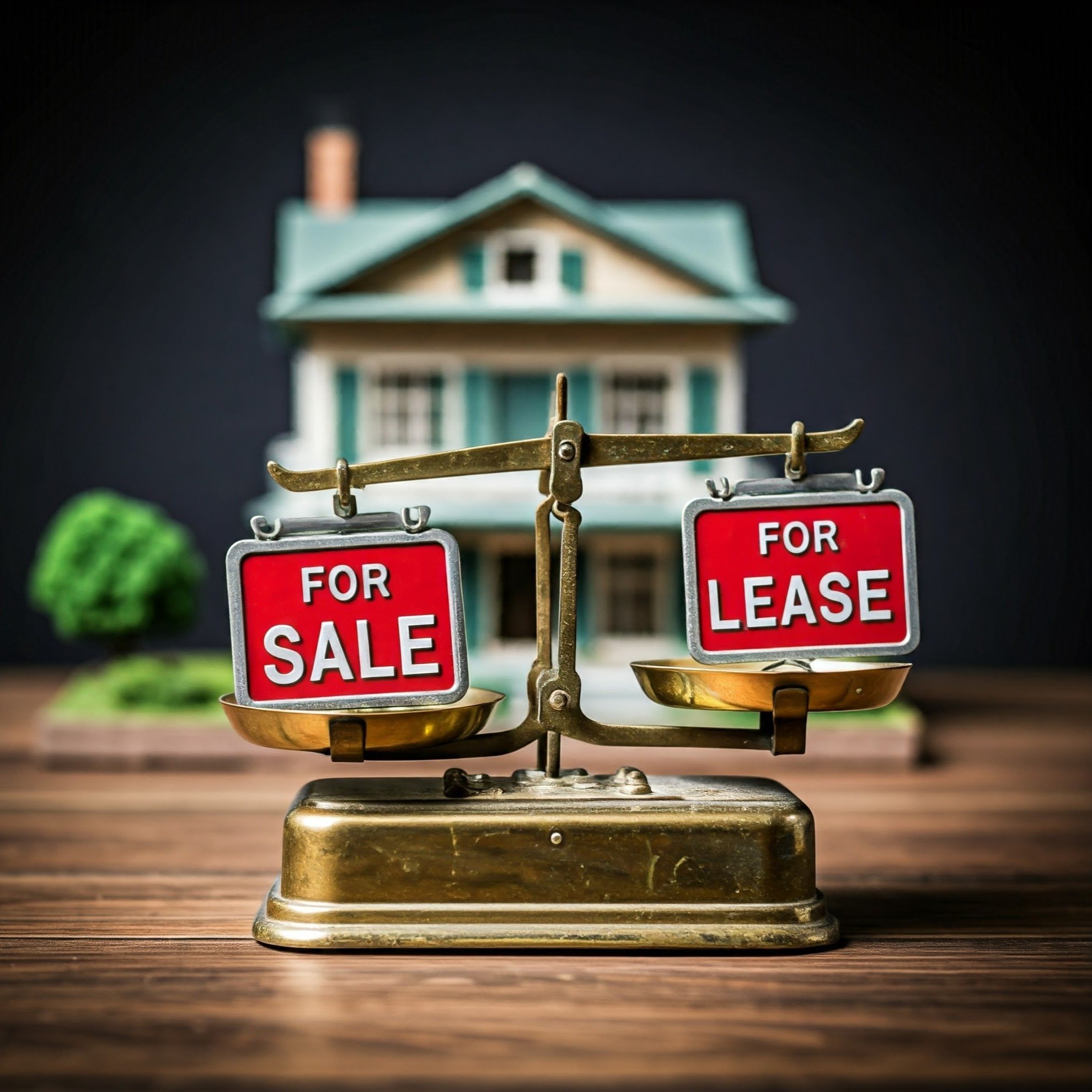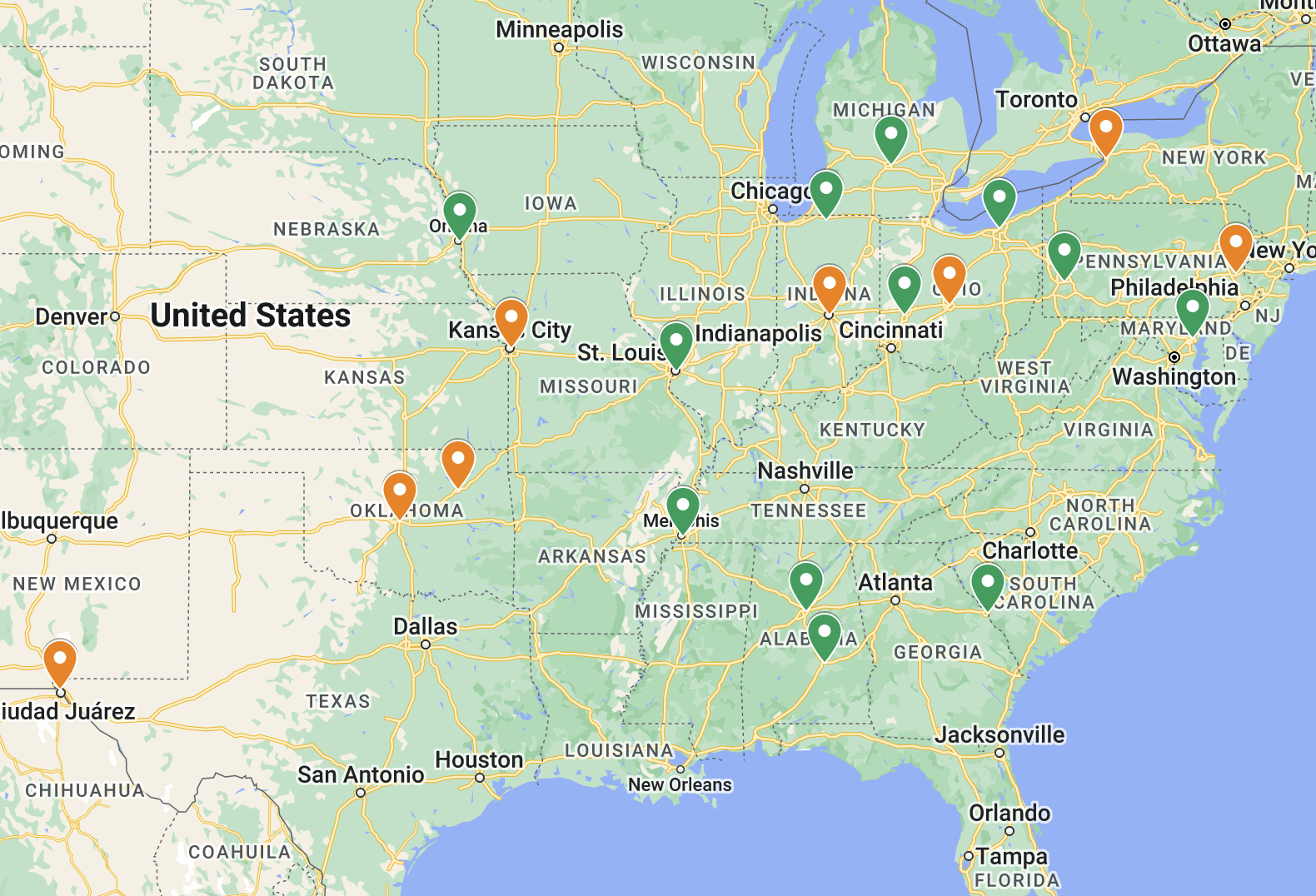Completing My First BRRRR Property
Last updated: 2023
Late in 2020, I purchased my first duplex in Memphis (regular readers may remember it — it was Property #18). As I wrote about at the time, there were some issues getting the appraisal done, which foiled my original plan to use a mortgage to buy this property. I happened to have the cash available, and didn’t want the deal to fall through — so I went ahead and paid cash, figuring I could refinance at a later time to pull money out of the property, if I decided that made financial sense.
I noted at the time that, should I proceed with the cash-out refi, it would technically constitute my first BRRRR property. For the uninitiated, here’s how that popular investing approach works:
Buy: purchase a property in need of a rehab, usually paying in cash or with short-term financing
Rehab: fix the place up
Rent: place a tenant
Refinance: use the new appraised value to pull as much cash as possible out of the property
Repeat: take the cash and start the process over
I’m not generally a BRRRR investor; this was the only time (so far) that I’ve done a rehab on a property immediately after purchase. In all other cases, I’ve bought properties that were ready to rent in their current condition, including several turnkey properties that had just been rehabbed by someone else. But with a refi, I realized that I would tick all the requisite boxes in the BRRRR method on this duplex, even if it was mostly by accident.
Well, I ultimately DID complete a cash-out refi in 2021 to pull some of my equity out of the property. In the earlier article on this property, I reviewed all the details, including the scope of the rehab (with before and after photos), the numbers after I stabilized the property with two tenants, and more. I won’t be rehashing all of that here, so you may want to go back and review that article first before proceeding with this one.
In this article, I’ll be focusing on the refi itself — first the process of getting the loan, and then the math I used to gauge the impact and benefit of the loan. I’ll explain why the loan ended up being much smaller than I had hoped, and why I went forward with it anyway.
OK, let’s get into it!
1 The Process of a Cash-Out Refi
The process of getting a refinance loan is pretty similar to getting a loan to buy a property — with the obvious exception that there is no seller involved in the transaction. It’s just you and the lender, which makes things somewhat simpler.
But you still have the same basic choices for financing: conventional mortgages; nonconforming rental loans; and more. (Learn more about all these options in this article.) In my personal case, I have exhausted my conventional mortgages — no more “golden tickets”! — so I’m now using nonconforming rental loans to scale my portfolio. I used Kiavi for this one.
What Is a Seasoning Period?
One consideration with the BRRRR approach is how quickly you’ll be able to get your money out. Most banks and lenders require a “seasoning period” before they will give you a cash-out refi — this is essentially a waiting period between your original purchase and the refinance. A typical seasoning period is 4-6 months, but this will vary by lender.
In this case, Kiavi required a 4-month seasoning period to get this loan.
The Appraisal
The lender will also place a ceiling on the size of the loan relative to the value of the property (usually referred to as loan-to-value, or LTV). Though this can also vary by lender, a typical limit on a cash-out refi is 75% LTV, which means the bank would be willing to loan you a maximum of $75K on a property worth $100K.
But how much is the property worth? This is determined by a third-party appraisal. The cost to order this appraisal is typically $500-$700 (in my market, at least), and that is paid by me. The appraiser uses various methods to arrive at a value for the property, and the bank uses this value to determine the size of the loan they’re willing to give.
Closing
Once all the numbers are sorted, you close on the loan. The paperwork is similar to the loan paperwork in a normal closing — but of course, instead of bringing a check (or wiring money) at closing, you GET a check, which is much more fun!
2 The Math of a Cash-Out Refi
Before we get into the math of the re-fi, let’s quickly review the numbers for the property before the re-fi:
Purchase Price: $74,900
Rehab Costs: $9,098
Closing Costs: $2,097
Monthly Rent: $1,545
With all expenses accounted for, my pro forma model estimated cash-on-cash returns of 15% (annual cash flow of about $13K on a total of ~$86K invested) — very strong indeed, especially considering I owned the property outright.
But with leverage, I had the opportunity to do even better. I was confident the value of the rehabbed/rented property was at least $120K. If the appraiser agreed, I could potentially pull ALL of my money out of the deal in the refi, meaning my cash-on-cash returns would be infinite. (First commandment of 4th grade math: thou shalt not divide by zero!)
Let’s see what those numbers would have looked like. I’ll assume the appraisal came back at $120K, and I proceeded with a cash-out refi at 75% LTV — in other words, a $90K mortgage. At this LTV, my interest rate would have been 5.5%. I’d have closing costs of ~$5K; with those costs netted out, I’d walk away from the closing with ~$85K.
Using the RIA Property Analyzer, let’s compare all the numbers, before and after the refi:
By taking out this loan, I would reduce my cash invested in the property from $86K to $1K, and as a result my cash-on-cash returns rocket from 15% to 580%. Returns after appreciation are even higher.
But the percentages become a bit meaningless, given that I have so little money in the property. Here’s a better way to think about it: I have a house producing over $6K cashflow annually that I paid nothing for. (Which is a pretty nice trick!)
In fact, this is the central promise and allure of the BRRRR method: the ability to recycle the same seed capital multiple times, making it possible to scale a portfolio without a big sum of initial capital to invest.
But it’s also worth noting that the loan eats up more than half the total cash flow the property would otherwise produce, reducing it from ~$13K to just over $6K. To make up that difference, I’d have to reinvest the $85K I cashed out, and produce at least $6500 of annual cash flow with it — that’s only 7% cash-on-cash, so it would be totally doable.
At this point, you might be wondering: if I end up with the same total annual cash flow after doing the refi and re-investing the proceeds, would it still have been worth it? The answer is yes, because even with the same cash returns, I’d likely have much higher TOTAL returns thanks to the many benefits of mortgages, such as mortgage paydown, the appreciation multiplier effect, and the ability to deduct mortgage interest as an expense. (And, in truth, I could likely increase my cash returns as well — for example, if I was able to invest the $85K proceeds at 10% cash-on-cash, rather than just 7%, I would increase my total cash returns from $13K to $15K.)
Alas, all of the discussion to this point has been purely hypothetical, because the appraiser came back with an appraised value that I thought was pretty ridiculous: $80,000. (This, by the way, shows how the BRRRR method can cut both ways — everything has to go just right for you to get all or most of your money back out, and it frequently doesn’t turn out that way for one reason or another.)
I asked Kiavi to appeal the appraisal, which they did, but to no avail. So I was faced with three options:
Option 1: Redo with the appraisal with a different company, and hope to get a higher value. The downside of this approach is that it would take another 4-6 weeks, it would cost me another $600, and the appraisal might not come back any higher.
Option 2: Live with the $80K value, and proceed with the refinance.
Option 3: Abandon the refi altogether.
I ultimately landed on Option 2. I didn’t like Option 1 (I didn’t want to wait, or pay more money), and I didn’t like Option 3 (I knew the benefits of leverage, and I’m not a quitter.) So I avoided making perfect the enemy of good, and went ahead with the refi at the $80K valuation.
But I still had an important choice to make: what size loan would I get? The max available was $60K, but I could also choose to get a smaller loan, which came with a better interest rate — and here’s where the math gets pretty interesting.
Choosing a Loan-to-Value Ratio
Given the $80K appraised value, here were the loan options Kiavi gave me:
The difference in rates was pretty significant, so I wanted to look at the numbers in each scenario to see which was optimal. So I turned to my trusty Analyzer, and here’s what I found:
As you can see, all the loan options dramatically increase my rate of cash returns and total returns relative to owning the property in cash. But despite the lower rates associated with the smaller loans, the largest loan (75% LTV) still provided the best numbers, including cash-on-cash returns of 28%. So that’s the option I chose, right?
Nope — in the end, I went with 65% LTV. My reasoning was that the rates of return were already so high on this deal, that I didn’t mind leaving more money in the property. To see what I mean, take a look at the difference in total annual cash flow for 75% LTV vs. 65% LTV — it’s $8,806 vs. $9,778, or just shy of $1K. And the difference in cash invested is, of course, $8K.
So I asked myself this question: in any other situation, would you be happy investing $8K for an annual cash return of $1K? That’s a cash-on-cash of 12.5%, so I had to answer yes. That why, in this case, I decided a little bit less leverage was optimal. (Would an even smaller loan have been better still? Maybe…but the minimum loan available to me was $50K, so I didn’t have much room to go lower than 65% LTV.)
I did give up just over $3K in annual cash flow by getting the loan, from ~$13K to ~$10K. But I have $47K to invest in order to recoup that difference, which is only a ~6% rate of cash-on-cash returns — so most likely, I will exceed that easily, and increase my total cash flow on these dollars invested.
Conclusion
By taking this cash-out refi, I completed my first (accidental) BRRRR. The property was a big success even before the refi, but using some leverage dramatically increased my rate of cash returns, allowed me to benefit from the many advantages of mortgages, and put some money in my bank account to reinvest.
Still, I wasn’t able to pull ALL my money out of the deal, which is often the goal of BRRRR investors. A low appraisal made that impossible for me, but other factors (over-budget repairs, unexpected delays, and more) can also derail BRRRRs, making them a higher-risk, higher-reward strategy than traditional buy-and-hold.
About the Author
Hi, I’m Eric! I used cash-flowing rental properties to leave my corporate career at age 39. I started Rental Income Advisors in 2020 to help other people achieve their own goals through real estate investing.
My blog focuses on learning & education for new investors, and I make numerous tools & resources available for free, including my industry-leading Rental Property Analyzer.
I also now serve as a coach to dozens of private clients starting their own journeys investing in rental properties, and have helped my clients buy millions of dollars (and counting) in real estate. To chat with me about coaching, schedule a free initial consultation.
Free Rental Property Analyzer
Like it or not, there is math involved in rental properties. That’s why a well-designed rental property calculator is the most important tool an investors has. It allows you to quickly calculate key metrics and understand your cash returns on a target property. You can also answer questions like:
How much do your cash-on-cash returns improve if you use a mortgage vs. paying in cash?
What will your average monthly cash flow be?
How will your returns change in future years?
Those questions can be easily answered with side-by-side comparisons in the RIA Property Analyzer. I guarantee this is the best free rental property calculator out there today, and many of my readers have told me the same. It’s both powerful and very simple and intuitive to use. Check it out!



































